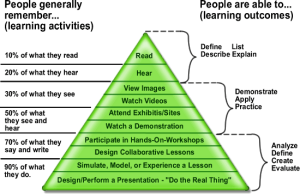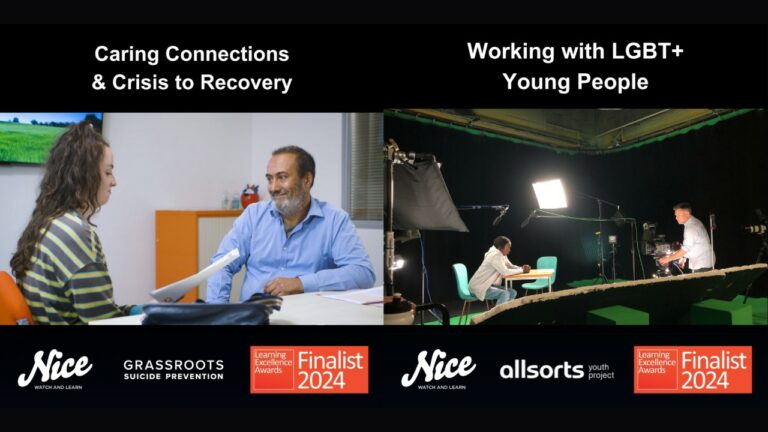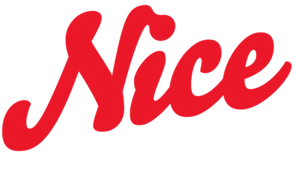How many of the theories that we believe could actually be myths?
After watching keynote Pedro De Bruyckere’s talk on myth-busting at the eLearning Network conference back in November, we felt compelled to check out his book, ‘Urban Myths about Learning and Education’.
The book, which De Bruyckere co-authors with Paul Kirschner and Casper Hulshof, is written for everyone involved in, or concerned about, education, and attempts to debunk most of the urban legends in the field. We’ve picked out the 10 most relevant myths to the L&D industry, and compiled a handy list that gives the real facts about theories most of us believe to be true, especially if they have become widely accepted (or we’ve been too lazy to check). We really recommend you check the book out as it’s well worth a read.
1. People have different styles of learning
The idea that people have different styles of learning, such as visual or kinaesthetic, is very common and is still used by many levels of education. The book argues that first of all, there is a great difference between the way someone says he/she prefers to learn and the way that they actually learn better, similar to the idea that what people like to eat is not always what is good for them. Studies have even found that learners who report preferring one instructional technique typically did not actually get any instructional benefit from it.
There is also the problem of learning styles themselves, as most are based on types that classify people into distinct groups. Most people do not fit into one particular style – and there are so many different styles (researchers have described 71 different learning styles) – creating a number of possible combinations greater than the number of people on earth!
The Learning Styles theory also encourages learners to potentially attribute failure to being matched with the wrong learning style, with blame going to the teacher that doesn’t cater to their particular style. Even though the use of the theory of learning styles is not encouraged and no solid evidence supports it, this does not mean that all learners should be treated in the same way.
2. The effectiveness of learning can be shown in a pyramid
Learning pyramids are used to explain several learning theories, for example Dale’s ‘cone of experience’ (below), which classifies types of learning experiences from concrete to abstract. Even though learning pyramids are often unclear and sometimes wholly inaccurate, research has shown that we are more inclined to believe something if it is accompanied by an image, even if it is purely decorative. It seems that pyramids in educational contexts are particularly good at this!
Dale’s cone of experience
3. You learn 70% informally, 20% from others and just 10% through formal education
The popular 70:20:10 rule suggests that how someone learns can be explained through a ratio – that learning based on experience (70%) is significantly higher than learning through interaction with others (20%) and classic methods of training account for just 10% of learning.
In a blog post, Doug Lynch argued that this rule is actually a myth based on a metaphor that dates back to the days of Archimedes (287 – 212 BC) who first showed that the largest part of an iceberg is hidden underwater, which was then made use of as a metaphor for learning.
However, on further investigation into where the rule is cited, the book’s authors found that the rule directly refers to training in leadership of executives, in the context of acquiring leadership skills. The authors pose an important question – can we automatically transfer these insights and use them for other purposes, or does the rule only apply to our future leaders?
The authors could find no evidence in the scientific literature to support the 70:20:10 ratio, and other studies even came out with a different ratio – 16-44-30 – learning from experience, talking to others, formal training, and then other unaccounted for influences.
4. If you can look everything up, is knowledge so important?
Why should we bother learning anything if we have the answer to everything on the internet? It has been argued that if all one needs to know is out there on the web, it is now a waste of time for teachers to teach and learners to acquire knowledge.
However, as Kirshner wrote, what we already know determines what we see and understand, and not the other way around. When we search for new knowledge on the web, we also need previously acquired knowledge, in order to interpret and understand the new information. Research has also shown that low prior knowledge negatively influences the search process. So keep learning!
5. 93% percent of our communication is non-verbal
This theory is sometimes called the ‘Mehrabian myth’, after the professor who carried out research on verbal and non-verbal communication. However, his original research only investigated the way people communicate their emotions and he never intended that his findings be applied to all forms of communication between people. Even he is irritated by the way his percentages are re-used, reportedly saying in an interview with the BBC – ‘every time I hear my results incorrectly quoted in this way, I cringe inside’.
6. We only use 10% of our brains
This idea has become a part of western culture. It seems we all like the idea that we have ‘undiscovered potential’ within us, however, the authors of the book call this claim a myth for several reasons. They put forward Neuroscientist Barry Beyerstein’s 5 arguments which help explain why the idea should be refuted.
– Brain damage. The effects of brain damage would be much less dramatic if we were using only 10% of the brain’s full potential.
– Evolution. Would we have survived for so long with such a large brain, with parts unused? Evolution would probably have ensured that our brain was never allowed to get so big. Beyerstein concluded ‘In the millions of studies of the brain, no one has ever found an unused portion [of the brain]’.
– Brain scans make it clear that there is neural activity throughout the whole brain, even when we are sleeping.
– Although the human body contains a few body parts that we have evolved not to need, such as wisdom teeth and the coccyx, this does not seem to be the case for the brain, as there is no known part of the brain that does not have a specific function.
– Degeneration. If our brain contained cells that were never used, these would die off, like the usual process for cells that no longer function in our body.
These ideas, as well as many other studies, suggest that we actually use all of our brain, all of the time.
7. The left half of the brain is analytical, the right half is creative
It is widely believed that there is an asymmetry between the two sides of the brain, the right side being more creative, holistic and innovative, and the left side more rational and systematic. The book explains how this concept originated during the nineteenth century, as doctors found that if one side of brain was damaged, certain functions would disappear.
The main argument against this more recent idea that left is ‘rational’ and right is more ‘creative’ is that we actually need to use both parts of the brain for creative and rational tasks. It is true that particular functions are localised to certain parts of the brain, but evidence from research shows how both halves of the brain are involved in creative processing, for example. The authors suggest that the danger associated with this myth is that it pigeonholes people into one of two boxes: rational or emotional, and it’s not that simple.
8. We can learn while we are asleep
The idea that we can learn new information while we’re asleep – also known as ‘hypnopedia’ – is not new and is a popular topic in fiction. It also has an obvious business element: many tapes and cds have been sold to help people learn during sleep – mostly promoting language learning. Experiments on sleep learning were already being carried out in WW2 on secret agents, in the hope they would be able to learn their ascribed region’s dialects if they continued learning foreign languages while sleeping.
Researchers in Israel have found that it’s possible to condition people to learn to associate a sound with a bad smell during sleep, but this is more a classical conditioning response. It seems people can be conditioned in their sleep, but further research is needed to know if we can extend this to real learning of new information.
9. We think most clearly when we are under pressure
This idea has also become part of our culture: when we are forced to think under pressure, we come up with better solutions. But do we really?
We are capable of amazing things when our bodies are under the influence of adrenaline, and a bit of pressure does help us to be more alert and create new memories. However, if these situations happen too often, they can have a negative effect on the brain. In particular, our memory can suffer if it is subject to too much pressure and stress.
Research has also shown that there is an optimum level of stress – too much or too little degrades performance.
10. New technology is causing a revolution in education
It has been thought that new technology such as televisions, computers, digi-boards and ipads would cause a revolution in education. However research has shown that classroom practice has remained stable during recent years. Extensive research has confirmed that actually the effectiveness of new technology in education is only determined by the way the medium is used and by the quality of the accompanying instruction.
A 2009 study on elearning did however conclude that the use of both elearning and contact education (blended learning) produces better results than lessons given without technology.
The crucial factor for learning improvement is to make sure that you do not replace the teacher with a computer, but instead use computers to supplement what the teacher does.
Why are these myths so persistent?
Research shows that if we repeatedly hear the same information, the human brain is tricked into assuming the memorised fact is true. Also, cultural factors strengthen myths. If we all do things in a certain way, we usually see it as being the way to do it, and don’t question it. The book is well worth a read as it helps to debunk these and many more myths that most of us in L&D encounter daily – in the hope that we can help people learn more effectively.
Although the book focuses on debunking the myths found in education and learning, the authors also share some educational tips and methods for which scientific evidence of their effectiveness does exist. We’ll be exploring these ideas in future blogs – watch this space!










